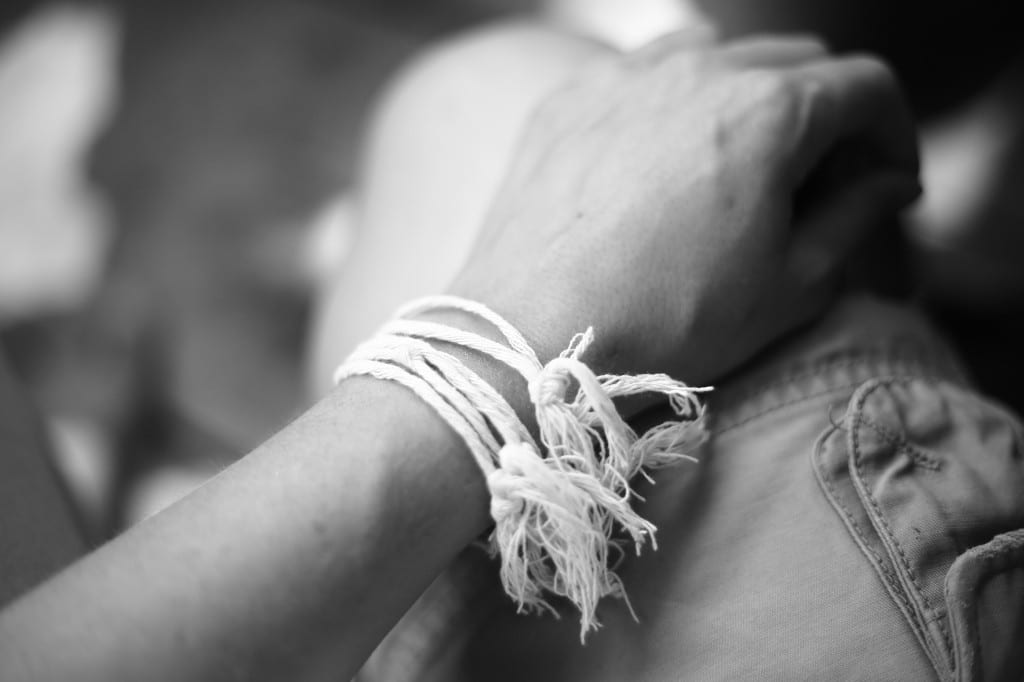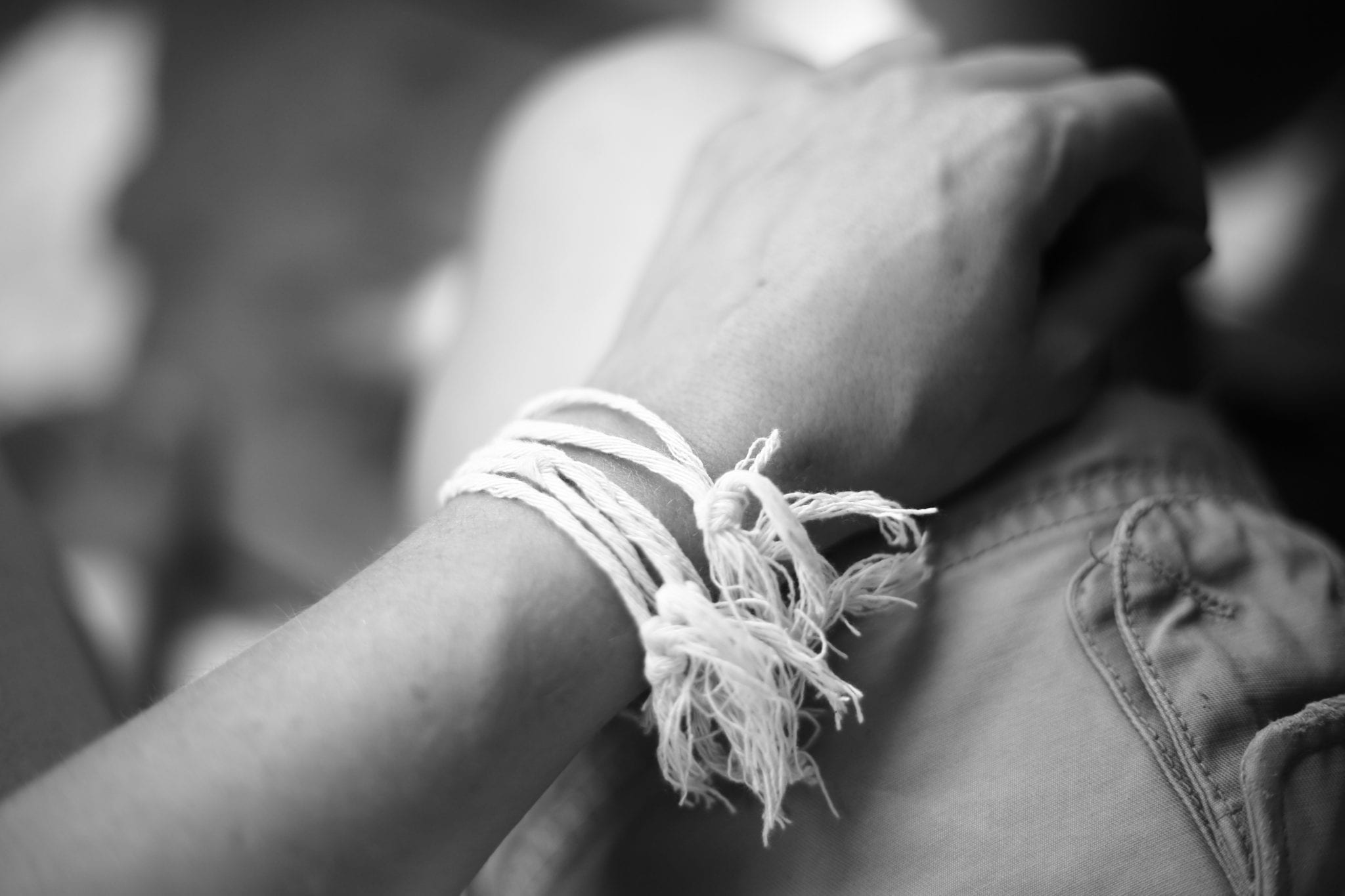
After enduring the oppressive heat and sterile tourist environment of Vientiane, it was with joy and apprehension that we boarded the night bus and, for the first time ever on an Asian bus, fastened our seat belts. We were thrilled to be moving on but, having driven the road north twice already, nervous about how a bus would handle the road – and how we, as passengers on the top bunks, would handle the bus handling the road. In the end, I managed to keep my eyes shut tight bar a couple of stops when I peered out the window to watch as four or five Lao men disembarked to help the driver navigate sharp, pothole-riddled corners. Each time was a spectacle in itself.
Our bus took us to Luang Prabang, where we caught a songtao (there are fourteen million ways of spelling that, often including silent r’s and h’s – I’m opting for phonetic; regardless of how you spell it, it’s the truck version of a tuk tuk) to the other bus station and another songtao with 20 of our newest friends to a small town called Nong Khiaw, four hours east of LP. From there, we caught a little boat one hour upriver through some rather worrying rapids and arrived in our next home: Muang Ngoi.
There are only two ways of landing in Muang Ngoi: by riverboat or by dirt bike. There is no road. And, up until our second day there, there was also severely limited power; guesthouses ran generators for about three hours each evening.
We stayed at Say Lom guesthouse, which is spitting distance from the village boat ramp but is remarkably quiet. I’m embarrassed to say that I never learned their names, but our hosts for three nights greeted us as though we were meeting long-lost family and continued to greet us with the same enthusiasm for three full days. It was proof positive once again that learning even just a few words of Lao beyond “hello” and “thank you” guarantee you a friendly greeting (unless you stay at Souksana guesthouse in Vientiane, in which case I don’t think even fluency in Lao would impress the owners).
Life among the three roads of Muang Ngoi is simple; the village is comprised mainly of farming families, with an extra dozen or two providing food and lodging to falang (literally “French”, but “foreign” in application) visitors. Nights are early as villagers prepare for an early start the next day; the nation-wide midnight curfew isn’t difficult to enforce here. This is a village committed to preserving Lao culture and, for the first time since arriving in the country, we saw multiple versions of signs explaining that it is unacceptable and embarrassing to walk around bare chested (men – although I expect it would be for women, too!) or in shoulder-baring tops (women) when not in your own village. The explanations were careful, yet simple, both evoking and carrying respect. So I sweated it out in t-shirts and we swam in our clothes – hardly a big price to pay to help a small village prevent itself from losing its culture. It’s efforts like this that help prevent the country from being overrun with 19 year old backpackers only there in search of tubing adventures and drugs. If more villages were able to insist on appropriate dress while keeping tuk tuk drivers from offering drugs, Laos would have much more of a chance of withstanding the effects of mass tourism over time.
While in the village, we spent our wifi-free (limited power = enforced break from rest of the world) days and nights wandering the dirt roads, finding great cocktails, watching local women weaving using impressive make-shift looms, trying out the village restaurants (pretty good) and papaya salad stand (excellent) and swimming in the river, where we were inundated with children wanting to play. It wasn’t until our second day that I discovered that each of my water games was accompanied by a different sound effect: the girls mimicked the sounds to tell me what they wanted me to do (side-to-side dunking, throwing, or
pushing them through the water on their bellies). They’d swim up, place their “order”, and off we’d go!
On our second evening, we went to Riverside Restaurant for happy hours again, and watched as a decorative offering of sorts was quietly assembled across the room with great care and attention to detail. Banana leaf tiers covered with flowers, four sticks covered in stringy white things I assumed were rice noodles (but to my amusement I later learned they were, in fact, just strings), more flowers, then rice, candies, rice cakes, and bananas were layered on to the decoration. The barman came over to tell us that the restaurant wouldn’t be serving food because they were hosting a special meal for Mai’s (the barman’s sister’s) mother-in-law, a Canadian from Kamloops, who was leaving the next day. After a few drinks, we stood up to make a quiet exit while the family was gathered on the floor and a prayer was being chanted. As we made our way to the door, the prayer finished and the family took the string-sticks off the centrepiece and began sharing them out and converging on Katrine, the mother-in-law. I leaned in to ask what was happening and if she’d mind me taking a few photos, at which point I, too, was confronted by family members with strings. The strings were symbols of the blessings and wishes for safe journeys and this ceremony was being conducted for Katrine because she was leaving after her first visit to the village.
My initial embarrassment over accidentally inserting myself into the ceremony and bewilderment at what was being said turned to humility and gratitude as person after person approached me, tied strings around my wrists while speaking quietly, then rubbed the knots and looked me in the eye to offer a final blessing. It was when one elderly woman was tying her knot and I caught the words “Mamma” and “Papa” that the full weight of their blessings hit me and I thought of my family, thousands of kilometres away, and their own wishes for our safe journey home. Two full weeks into our time in a country that I’d heretofore somewhat regretted visiting and now I was being treated like a grandchild by a woman who had never met me. Talk about being put in my place.
Mai’s mother invited us to stay for dinner and, after initial discomfort over accidentally crashing an important evening, we understood that the right thing to do was stay put both because we’d been invited by one of the cooks and because we’d likely never experience anything like this ever again. We drank lao lao (fermented rice whiskey), beer for Rich and red wine for me, and dined with our hands and little steel spoons on exceptional food: fried river weed topped with dried tomato, sesame seeds and garlic; a succulent fish soup; fish laarb (traditional spiced minced fish salad); fried greens; and sticky rice. This was not falang food, and it was far better than anything we’d eaten since arriving in Laos.
We had very pleasant dinner conversation with Katrine and learned that the “bracelets” traditionally stay on for ten days, then three are left in place until they fall off. (So when you see slightly ratty, greying bits of string on my wrists, know that I’m not just going for a new grunge look – I’m doing my best to observe tradition.) We bid everyone good night shortly after the meal had wrapped up, then set off to catch up with the group of three Brits we had become friendly with during our stay. More lao lao and beer, then bed, then laughter as I saw the state of everyone at breakfast the next morning! Sometimes, not being a beer drinker has distinct advantages.
The big news during our stay was the installation of electricity metres – everyone in the village now had 24-hour power. After speaking to Ping, a local we met at dinner, we learned that he was spending 90,000 kip (roughly $13) per month on gasoline to power one light bulb and a TV each evening, which turns out to be about 20% of the average income in a country where the average annual earnings come in at about $800-1000. When we asked how much the electricity was going to cost, he didn’t know. This presented us with some concerns, as I became conscious of the possibility that villagers could, potentially, find themselves in a bit of trouble after receiving their first month’s electricity bill. I can only hope that my concern is influenced by my exposure to the Western (or maybe just the developed) world’s tendency to waste. At any rate, the electricians received a great deal of attention that day and the metres were studied quite carefully.
As with any means of transport in SE Asia, boat drivers tend to put money before complete safety and the trips up and down the Nam Ou river sometimes had me cringing as water lapped at the edges of the boat or the engine struggled to push the boat upstream against the rapids. After a trip down the river to Nong Khiaw to watch the annual inter-village boat races, we got a bit of a wake-up call. Our boat passed a much smaller, open-sided traditional boat holding groceries, four adults and a young boy and our wake washed up over the front of their boat. As we sped into the rapids, their boat sunk down into the river. Not knowing how deep the river was in that spot, the falang on board were all horrified by the potential for tragedy, given the child on board, and there were a few very quiet moments onboard our boat as everyone watched to see what happened back downstream. Fortunately, all of the occupants were fine, the boat was bailed out and brought upstream through the rapids and tied to our boat, after which it was safely towed back to the owner’s village.
After three very relaxed days in Muang Ngoi (despite that boating hiccup), we boarded the boat quietly and set out for Nong Khiaw and then Luang Prabang, knowing that we’d witnessed the end of one era and the beginning of another in Muang Ngoi.
Grateful for: generosity of spirit



